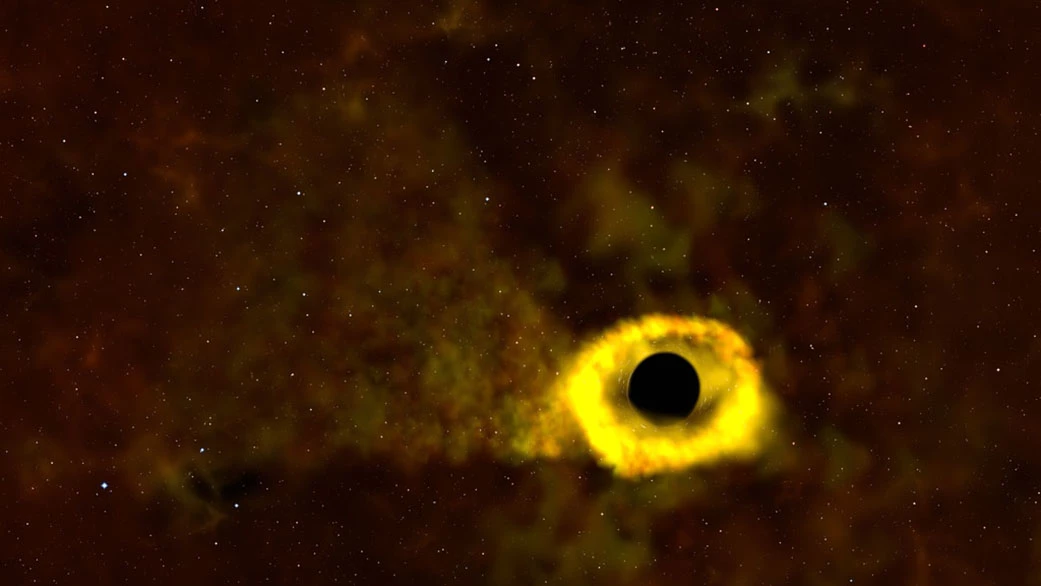NASA's Transiting Exoplanet Survey Satellite (TESS) has observed a gigantic black hole ripping apart a star in a distant galaxy. The ultra-rare event, called ASASSN-19bt, occurred 375 million light-years away in the galaxy 2MASX J07001137-6602251 in the constellation Volans, where a black hole six million times the mass of our Sun devoured a star that may have been about the same mass as the Sun.
Some neighborhoods of the universe can be very unpleasant places marked by incredibly destructive high-energy events, like quasars, supernovae, and gamma-ray bursts. Fortunately, many of the most dramatic events are short-lived and some are rarer than others.
For example, a supernova may produce as much energy as an entire galaxy as it explodes, but it's only a brief event that occurs about once a century in a galaxy the size of our Milky Way. By comparison, ASASSN-19bt is an event that's much less common – occurring once every 10,000 to 100,000 years.
What happened in ASASSN-19bt is that a Sun-sized star passed so close to the giant black hole that it entered what astronomers call the Roche limit. That is, the distance where a celestial body, like a moon, is subjected to the tidal forces of a larger body, like a planet, that become so strong that the smaller body is torn apart.
This may have been the origin of Saturn's rings, or what prevents them from forming into a moon, and it's what produced ASASSN-19bt. During a 41-day period, TESS saw the light from near the black hole steadily and smoothly rise as the star disintegrated into a disc orbiting the hole, indicating that this was an example of tidal disruption rather than a supernova or an exploding galactic core.
According to NASA, ASASSN-19bt was odd in that its temperature dropped by 50 percent from 71,500° F to 35,500° F (40,000° C to 20,000° C) over a few days. Meanwhile, the level of X-ray emissions remained typically low for such an event – possibly due to the rays being absorbed by debris.
Though TESS played a major role in gathering the earliest data yet about such an event, it was not the source of the discovery and its part in the study was a stroke of luck. As part of its main planet-hunting mission, TESS spends 27 days at a time scanning many sectors of space and happed to be looking at ASASSN-19bt when it roared into life.
Unfortunately, TESS's orbit only allows it to transmit data back once every two weeks, which must then undergo extensive ground-based analysis. Because of this, ASASSN-19bt was first seen by the All-Sky Automated Survey for Supernovae (ASAS-SN), a worldwide network of 20 robotic telescopes, and then looked at more closely by ground observatories, NASA's Swift Gamma-Ray Burst Mission space telescope, and ESA's XMM-Newton X-ray space telescope. However, it was the TESS data that showed the event from its very beginnings long before it was visible to other instruments.
"For TESS to observe ASASSN-19bt so early in its tenure, and in the continuous viewing zone where we could watch it for so long, is really quite extraordinary," says Padi Boyd, the TESS project scientist at Goddard. "Future collaborations with observatories around the world and in orbit will help us learn even more about the different outbursts that light up the cosmos."
The research was published in The Astrophysical Journal.
The video below discusses the star-shredding event.
Source: NASA





